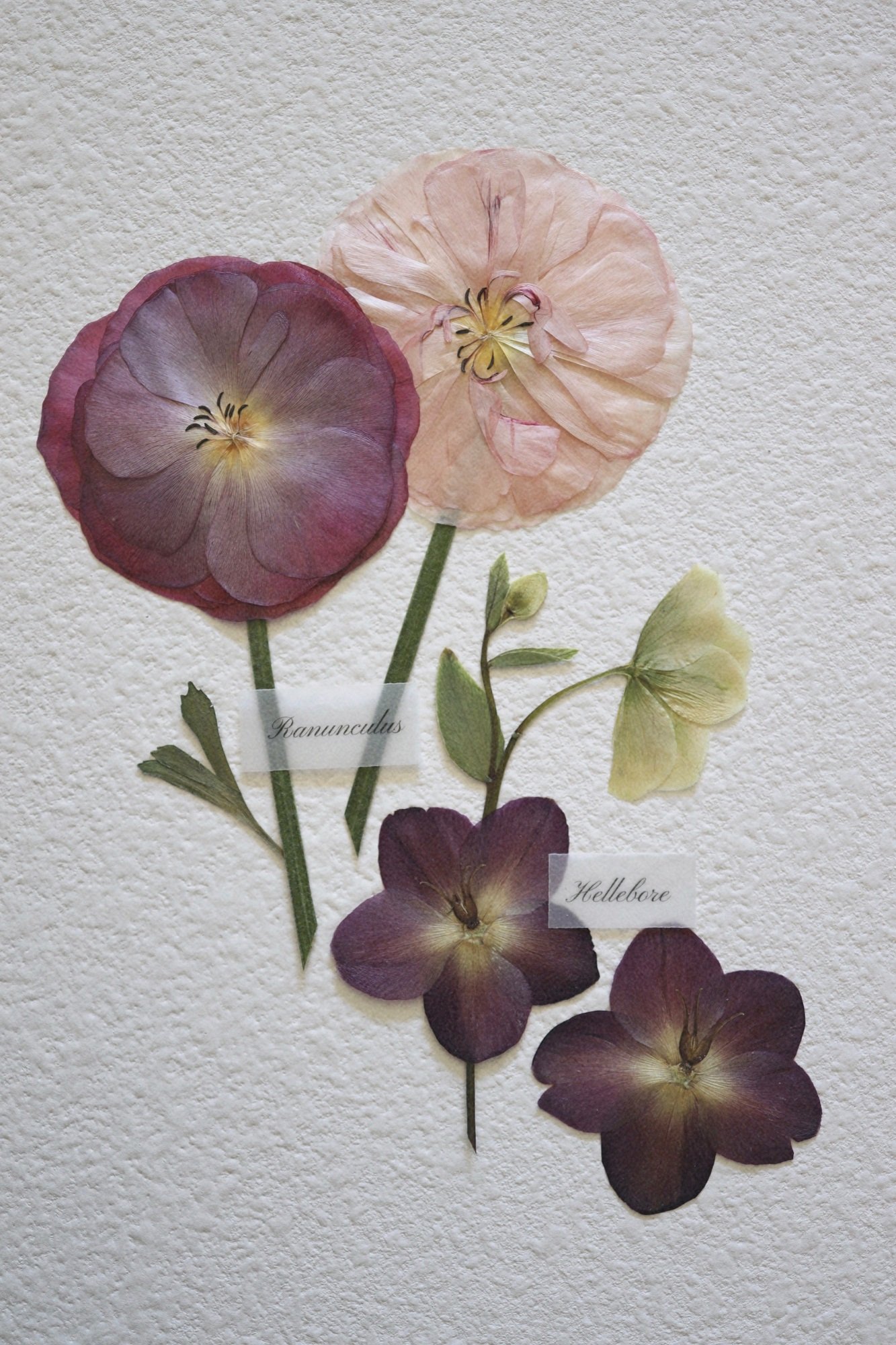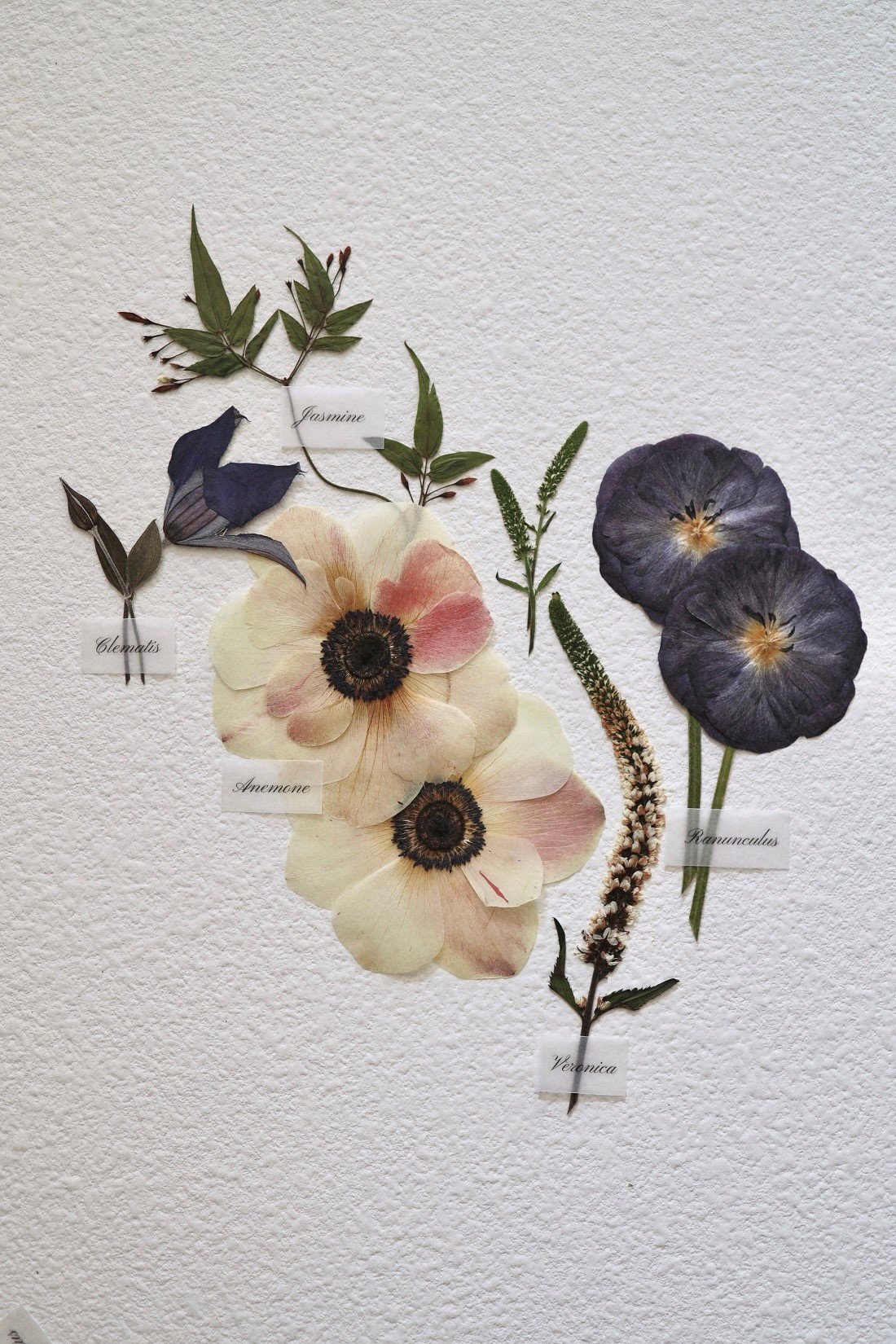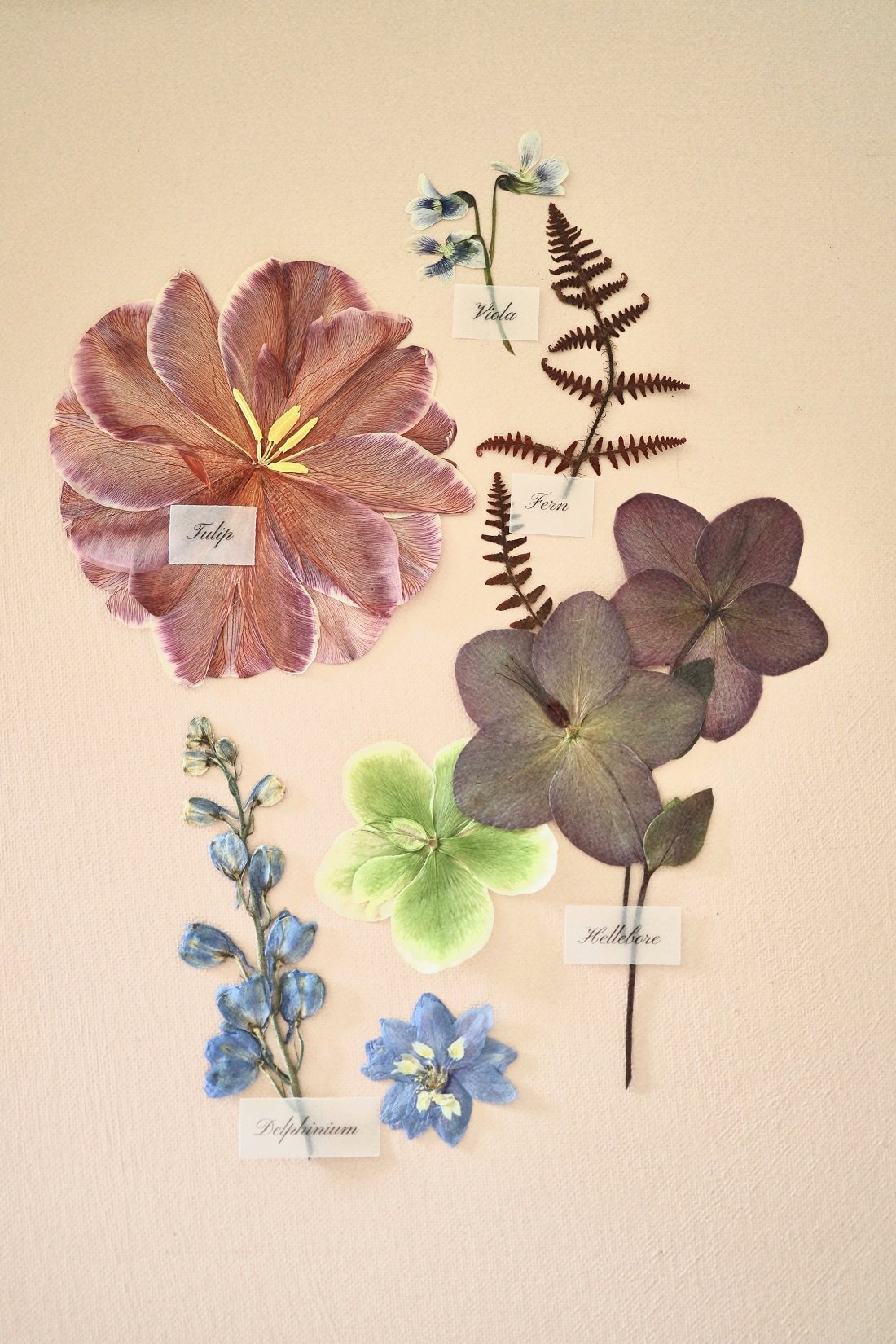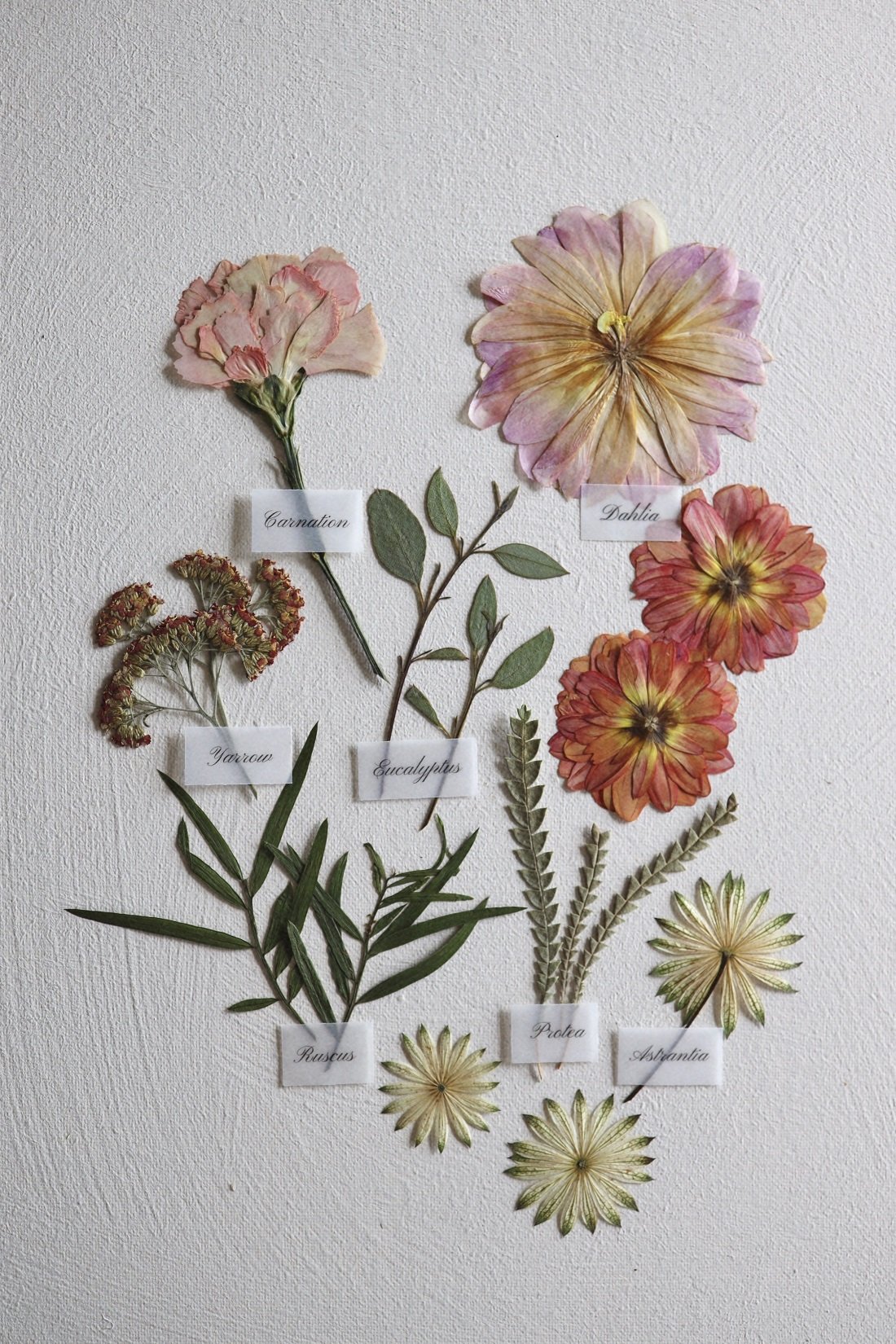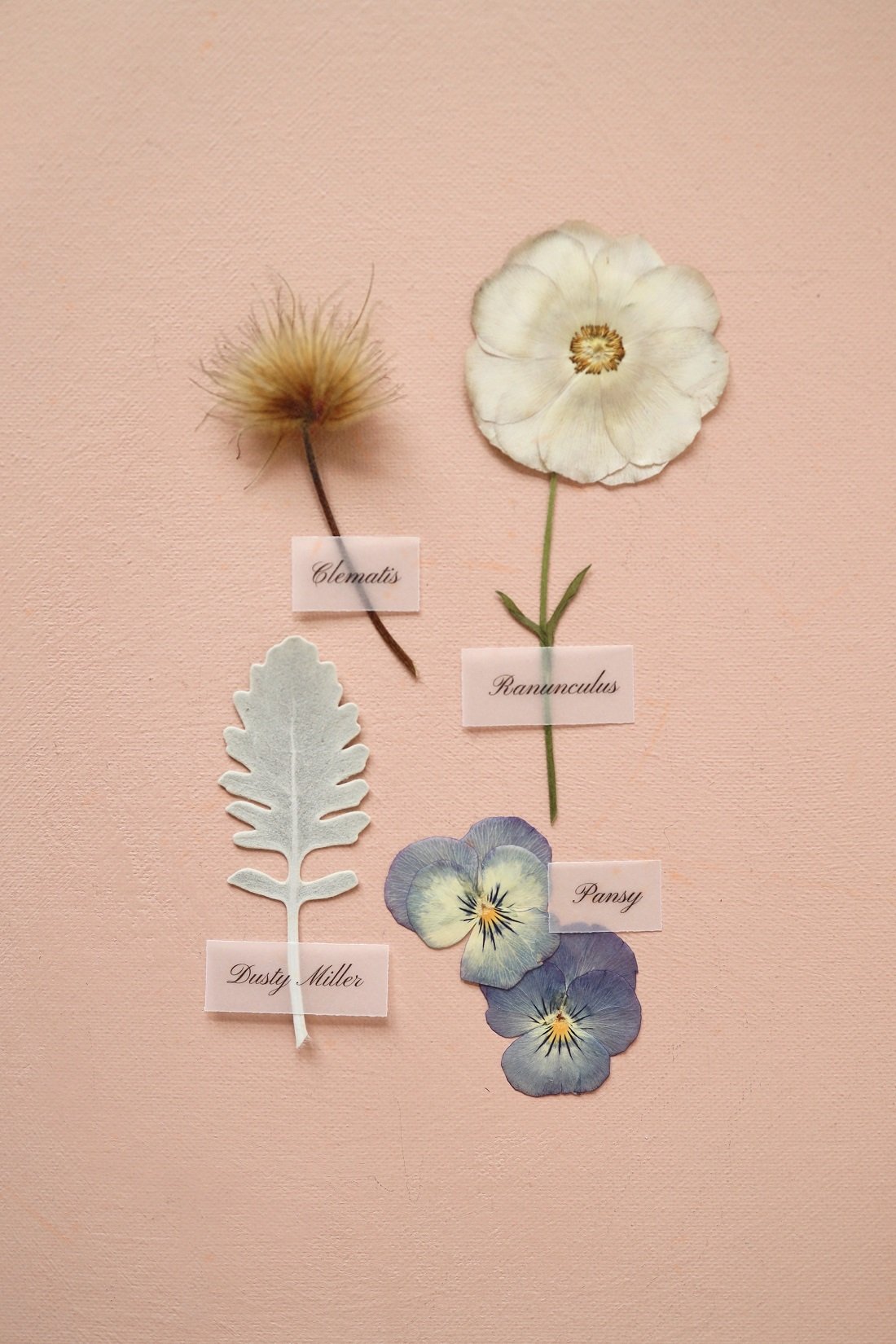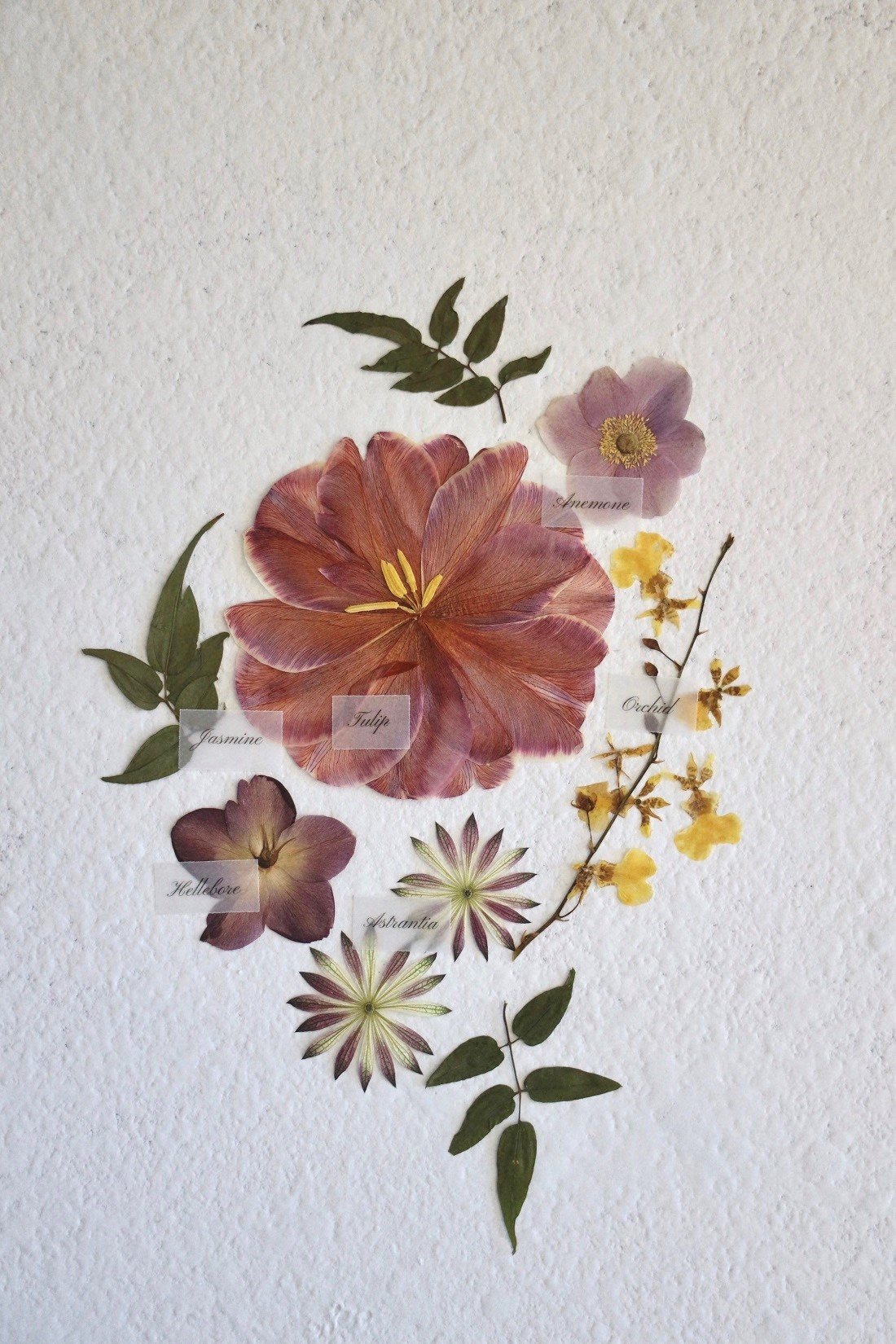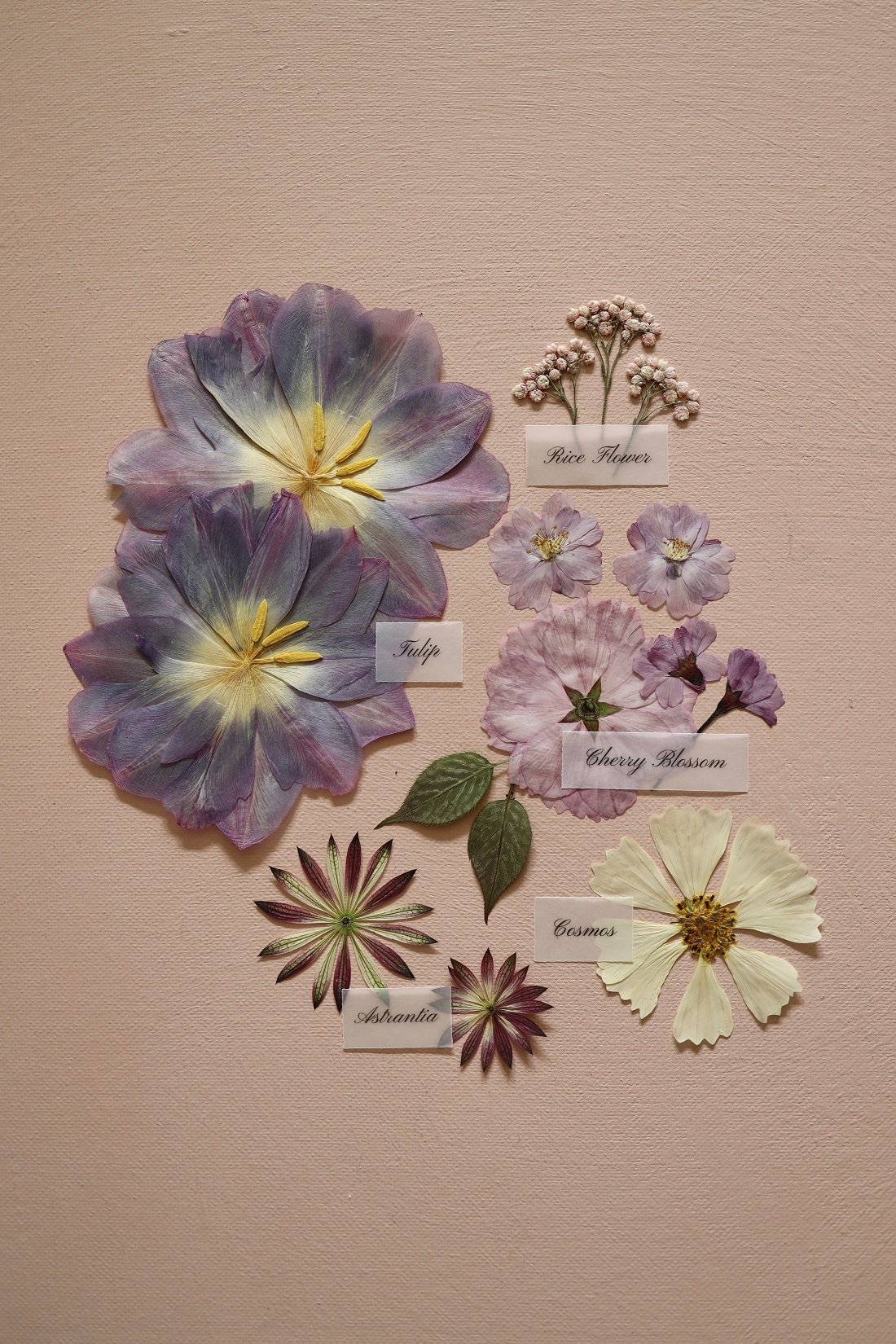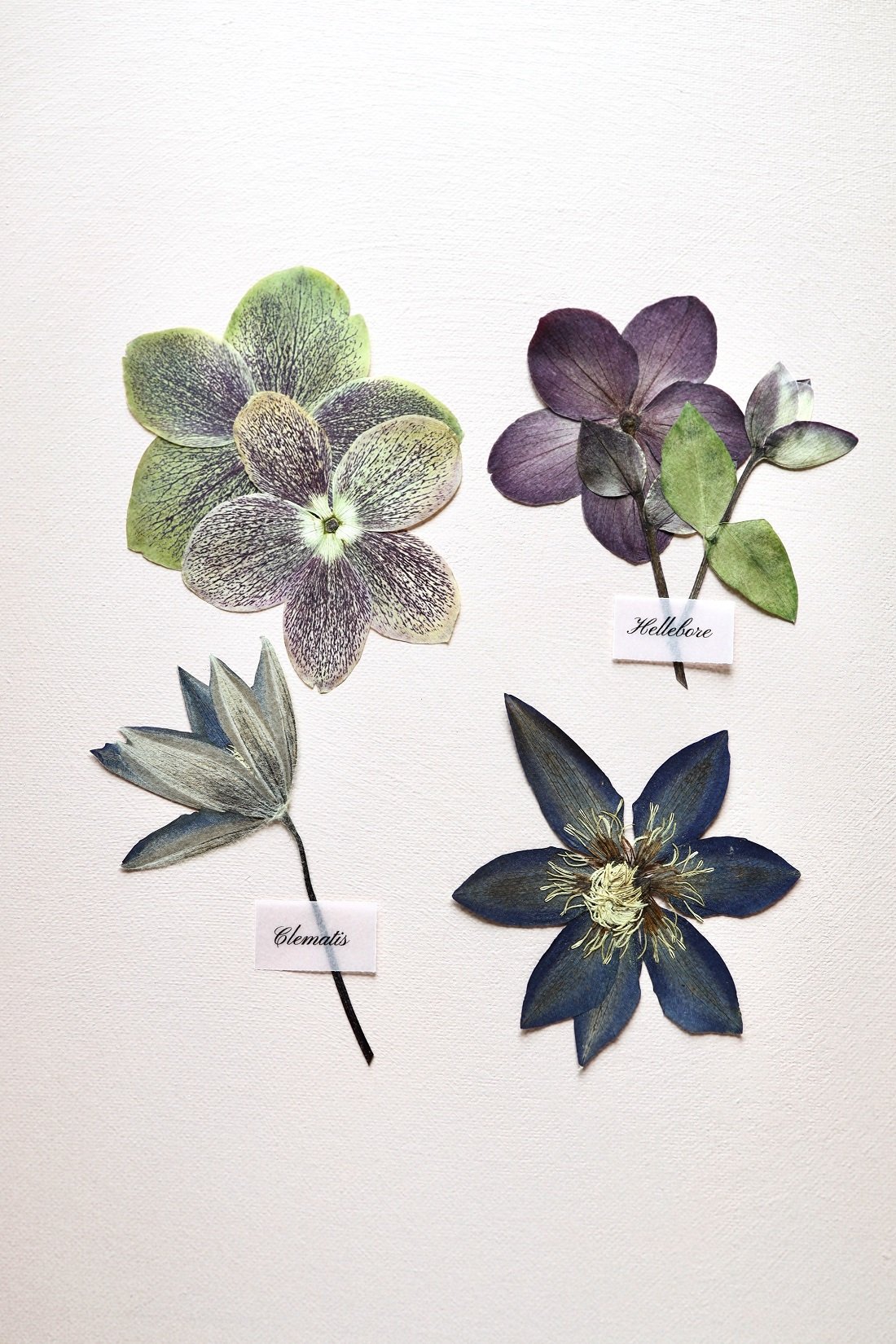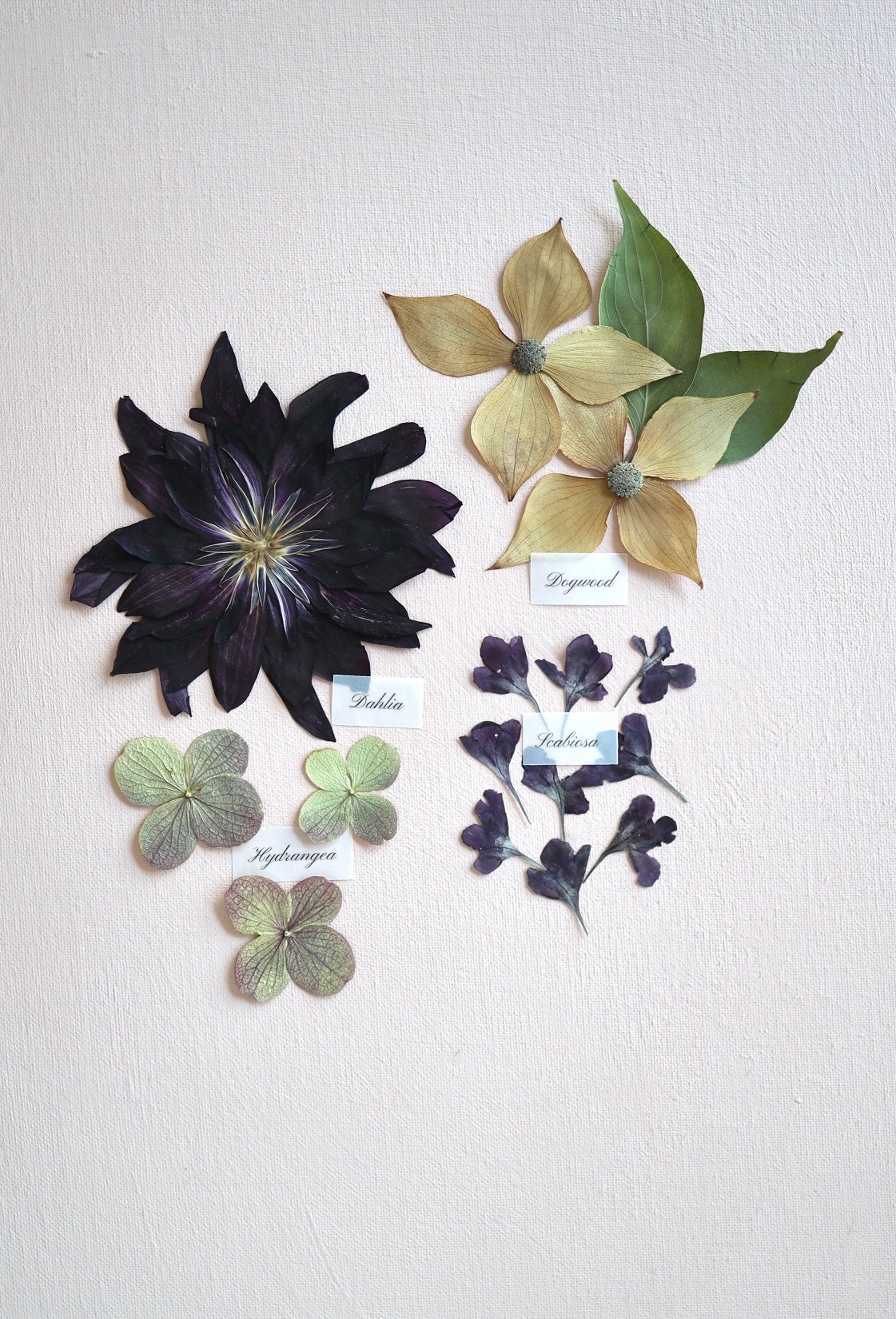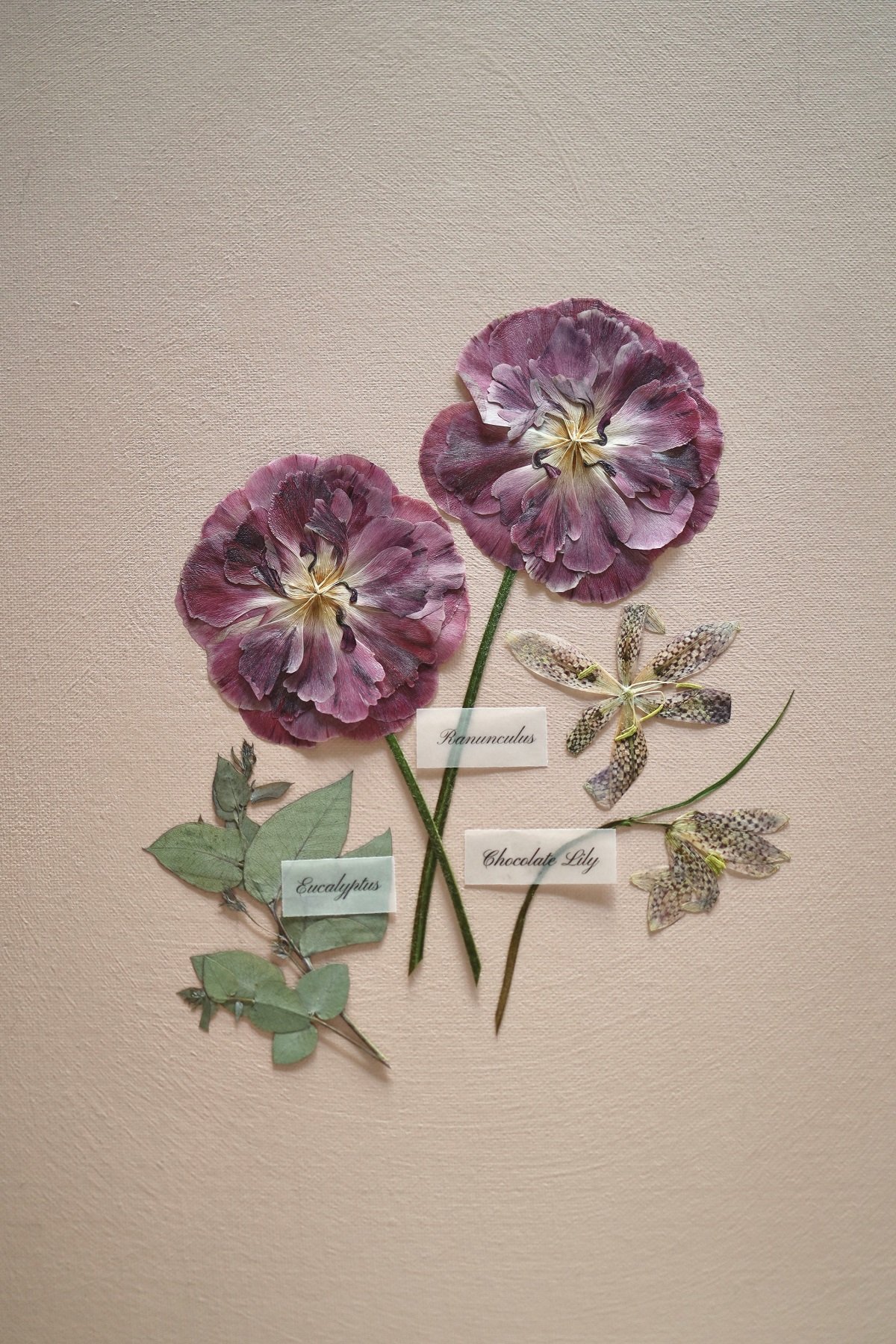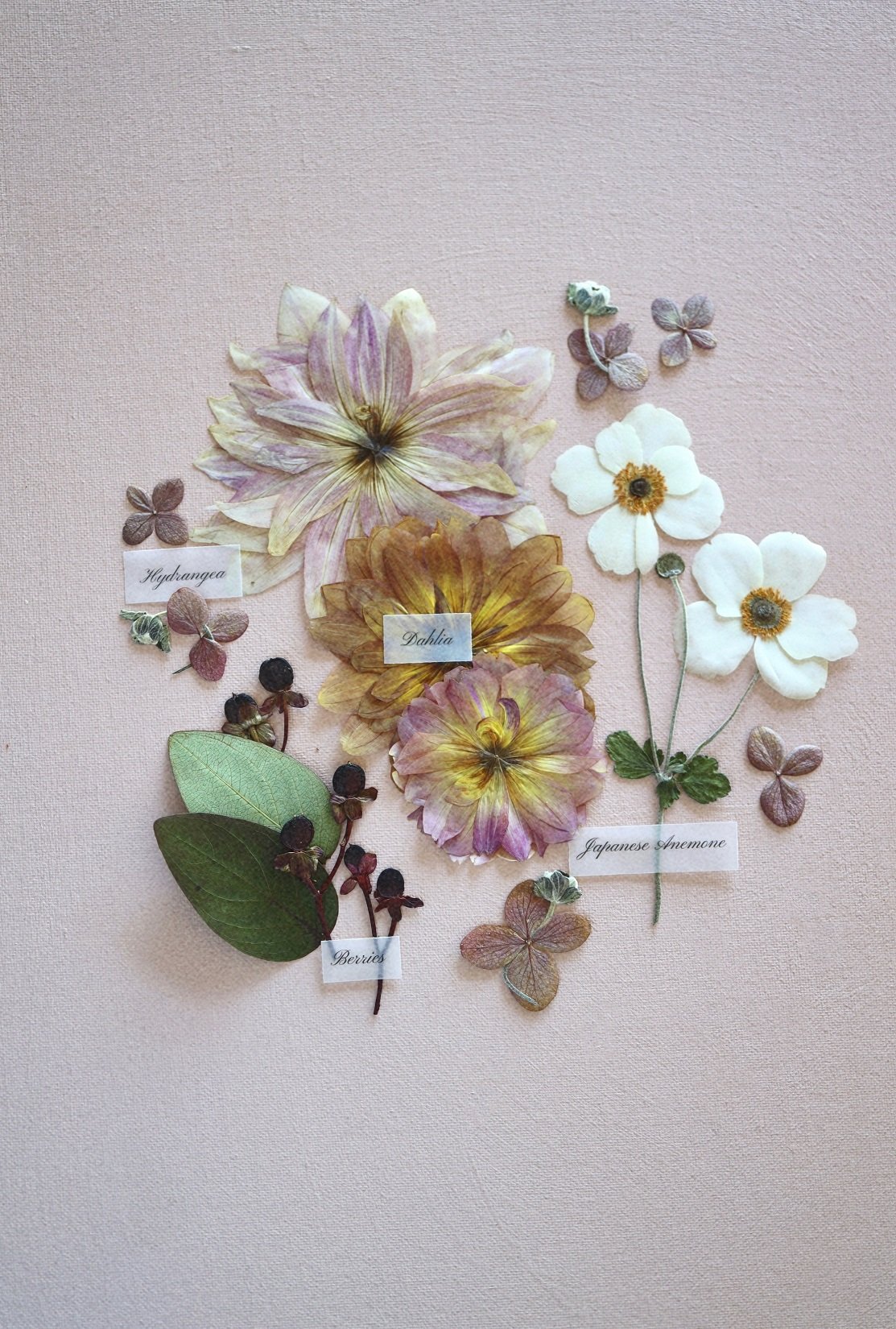Which Wedding Flowers Press Best?
Which wedding flowers press the best? Can you press any flower? Do all pressed flowers fade and turn brown?
These are some of the frequently asked questions so we put together a short guide with the list of flowers that successfully press. If you’ve decided to have your special florals preserved, read this article to learn which type of flowers look the best when framed!
The rumors are true – regardless of their equal beauty while fresh, some flowers press more successfully than others. The final results depend on many factors such as the thickness of the flower, percentage of the moisture that the flower possesses, whether the petals were blemish-free prior to pressing, how well the flowers were prepped before being laid inside the press, and so forth. Additionally, certain flower types, such as tropicals are not good candidates for the traditional wooden press as they naturally hold lots of moisture and can not be effectively dried or pressed without completely losing their original vivid colors. With a few exceptions, tropical flowers almost always turn brown during the preservation process, regardless of their primary shade — unfortunately, this includes anthurium and most types of orchids.
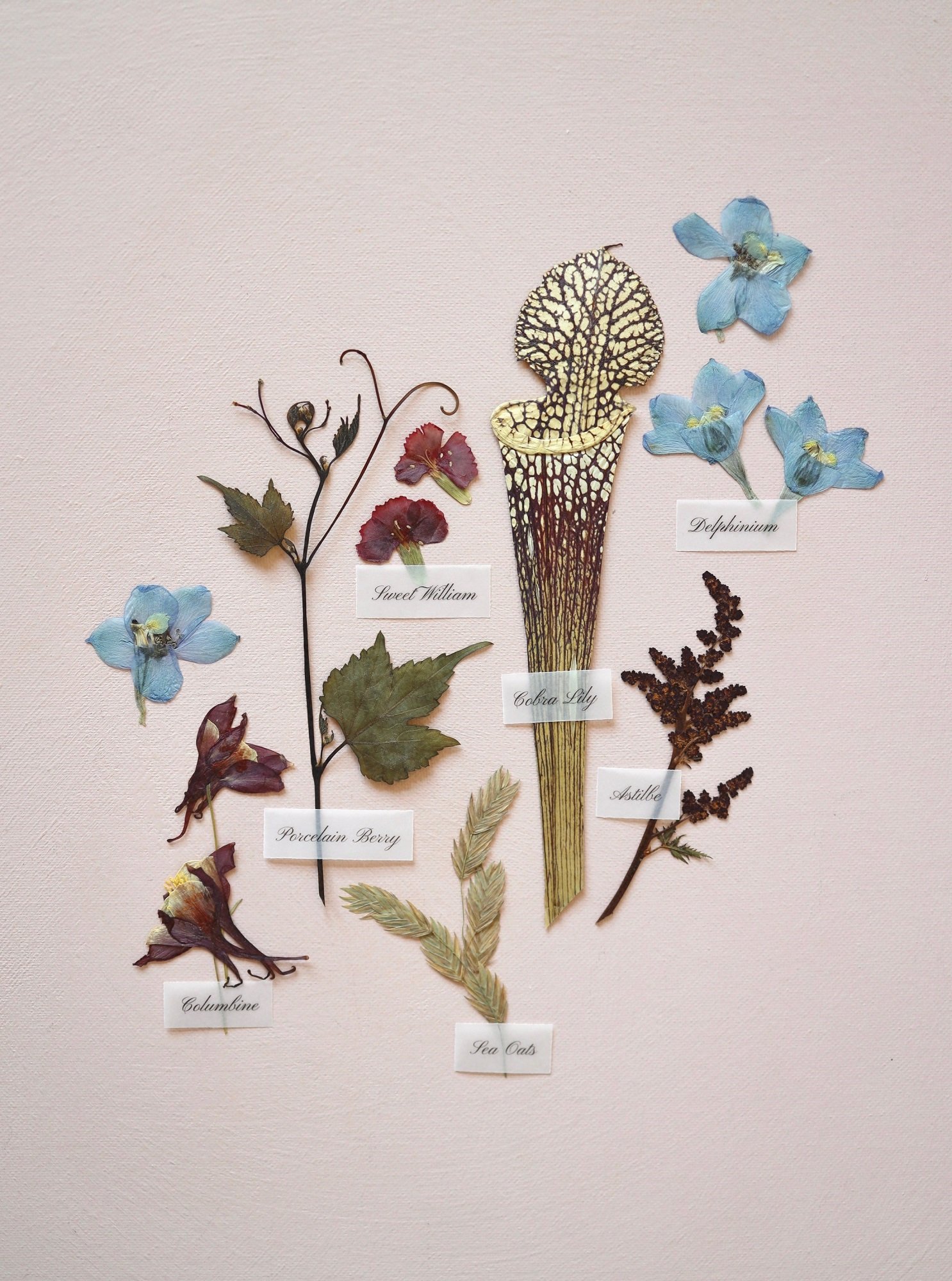
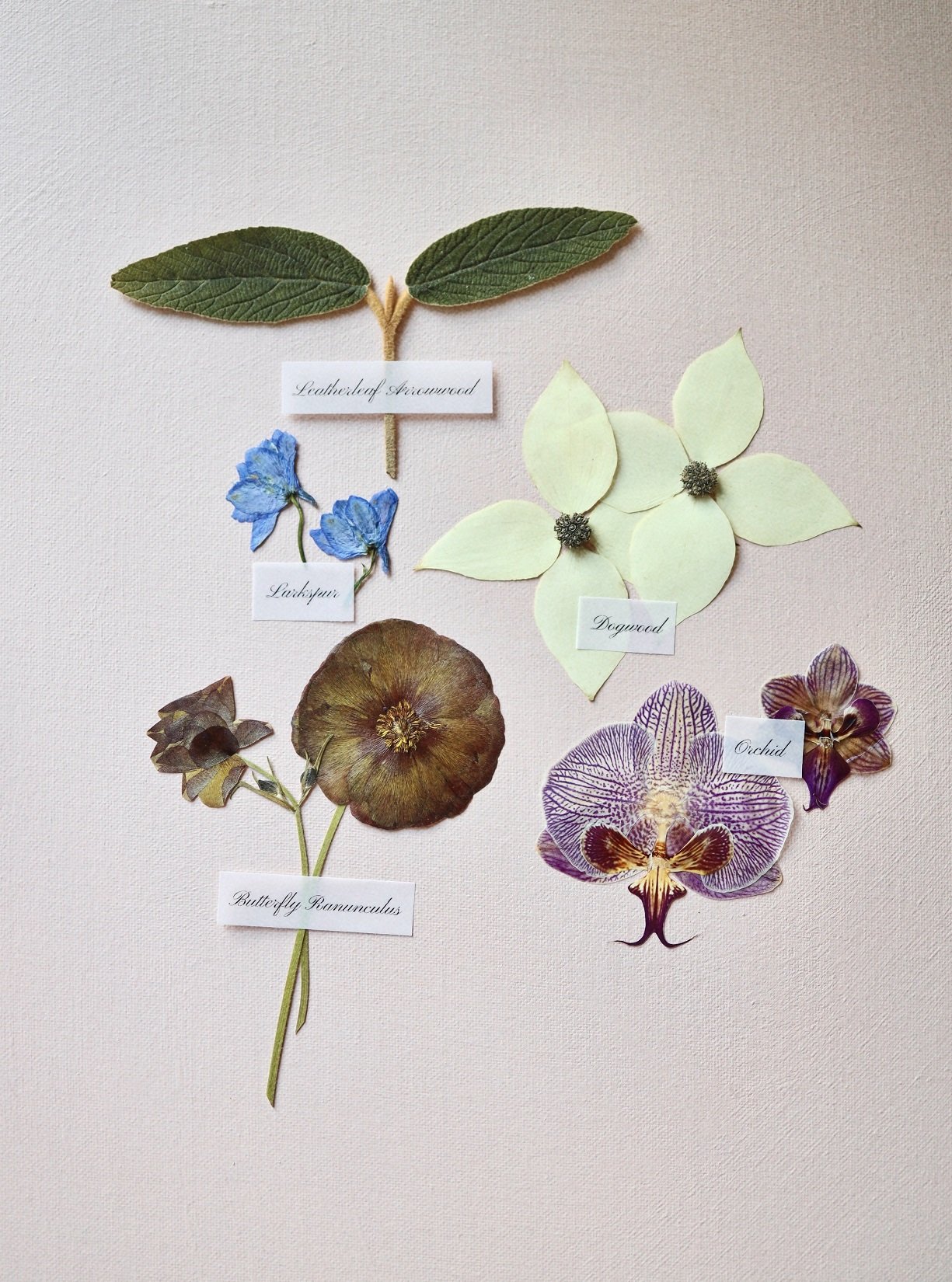

“The better the quality of the blooms while fresh, the better they will look when pressed”
We often work with our clients and their florists to pick the florals that preserve well while matching their wedding theme and personal aesthetics. However, in many cases, florals are already pre-selected by florists or our clients have specific flowers that are meaningful to them, and that is fine too! Our common practice is to preserve all the florals included in the arraignment, including the ones that do not preserve well, and we later select the best-looking blooms to be framed.
Beautiful When Pressed
Florals that retain their color and press the best are the following: Anemone, Astrantia, Astilbe, Baby’s Breath, Billy Balls, Butterfly Ranunculus, Bunny Tails, Blushing Bride Protea, Caspia, Celosia, Cosmos, Clematis, Clover, Delphinium, Dusty Miller, Dogwood, Eucalyptus, Fern, Gomphrena, Hydrangea, Hellebore, Kangaroo Paw, Lavender, Larkspur, Lunaria, Pampas Grass, Peony, Queen Anne’s Lace, Rice Flowers, Ranunculus, Ruscus, Stock Flowers, Snapdragon, Spray Roses, Sweet Peas, Thistle, Veronica, Violets, and Yarrow.
Flowers To Avoid
Flowers that are beautiful fresh but do not preserve well with our methods or are too large and overwhelming for our floating frames are Anthurium, Calla Lilies, Garden Roses, Iris, Lilies, Orchids, Succulents, and Sunflowers. All tropical florals generally do not press well as they have a lot of moisture and mold easily.
Color Retention & Transformation
When it comes to color retention, again certain types of blooms hold their color and shape much better than others and maintain their vibrant hues through the preservation process. Bright and rich colored flowers retain their initial color quite well and look lovely when pressed and framed.
The color changes also vary among different types of flowers. For instance, light pink roses will turn to light purple/lavender, whereas light pink peonies will retain their pink color or turn slightly lighter than their original shade of pink. Needless to say, we love working with colorful arrangements and enjoy seeing these organic transformations!
For more details on color transformation, see the list below.
All-White Bouquets
White flowers and light shades such as blush and pale pink, generally do not hold their colors well and tend to turn yellowish during the preservation process and often continue browning/changing their color over time. Some of the flowers that always turn yellow are white roses, veronica, lisianthus, dahlia, stock flowers, carnations, and sweet peas — although, these are fun to be framed if they are accompanied by some colorful foliage!
Don’t get me wrong, all-white bouquets are gorgeous while fresh, but when framed, monochrome arrangements are not very aesthetically pleasing. For this reason, we try to avoid working with all-white floral arrangements unless there is some type of greenery included and/or some of the following florals: astrantia, king protea, and ranunculus — these types of flowers have lots of texture they retain their original white color to a certain extent.
FROM FRESH TO PRESSED
White – Yellowish to brown
Light yellow – Yellowish to brown
Bright yellow – Great color retention: change of the initial color to a slightly darker/lighter shade
Bright pink – Great color retention: change of the initial color to a slightly darker or lighter shade. Often transforms to dark magenta
Orange – Great color retention: change of the initial color to a slightly darker or lighter shade
Red – Great color retention: change of the initial color to a slightly darker or lighter shade
Purple – Great color retention: change of the initial color to a slightly darker or lighter shade
Blue – Great color retention: change of the initial color to a slightly darker or lighter shade
Green – Great color retention: change of the initial color to a slightly darker or lighter shade
Note that the list above is just a general overlook and that results vary among different types of flowers. For example, light pink roses will turn to light purple/lavender, whereas light pink peonies will retain their pink color or turn slightly lighter than their original shade of pink.

